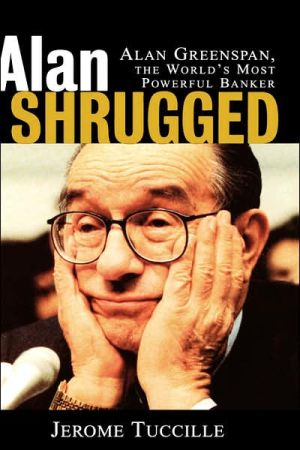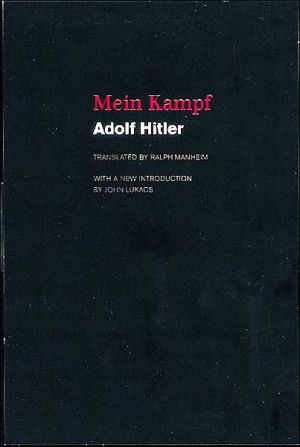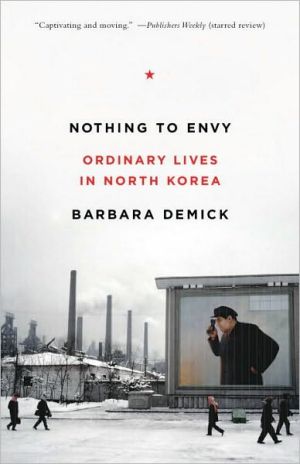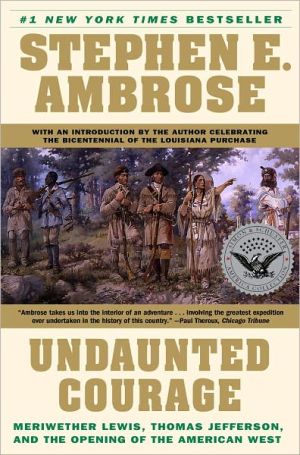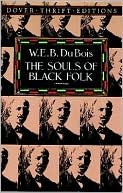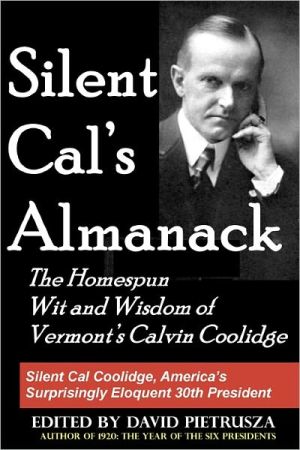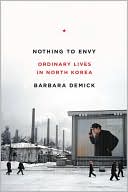Alan Shrugged
Power . . . Personality . . . Paradox\ When Alan Greenspan talks, Wall Street listensas do bankers, investors, politicians, and economists throughout the world. He is the number one arbiter of U.S. monetary policycredited, as Chairman of the Federal Reserve, with having simultaneously held inflation down and kept the economy growing throughout the longest and largest economic expansion in U.S. history.\ Yet, this Atlas of number crunchers, who owned and operated a highly successful Wall...
Search in google:
Power . . . Personality . . . ParadoxWhen Alan Greenspan talks, Wall Street listens—as do bankers, investors, politicians, and economists throughout the world. He is the number one arbiter of U.S. monetary policy—credited, as Chairman of the Federal Reserve, with having simultaneously held inflation down and kept the economy growing throughout the longest and largest economic expansion in U.S. history. Yet, this Atlas of number crunchers, who owned and operated a highly successful Wall Street consulting firm, never amassed a personal fortune, was a member of the cultlike inner circle surrounding one of America's most controversial authors, and began his career as a professional jazz musician. Clearly, there is even more to Alan Greenspan than meets the eye. In Alan Shrugged, you'll meet Greenspan the public figure and Alan the private man in the most detailed, revealing, and entertaining account of Greenspan's life and career ever published. Filled with surprises, amusing anecdotes from the likes of Henry Kissinger and Barbara Walters, and thoughtful insights from bestselling biographer Jerome Tuccille, Alan Shrugged offers an informative and engaging portrait of one of the most powerful, capable, and complex figures on the American political scene.
Alan Shrugged\ Alan Greenspan, the World's Most Powerful Banker \ \ By Jerome Tuccille \ John Wiley & Sons\ ISBN: 0-471-39906-X \ \ \ Chapter One\ You know how it was in the early days, before the population explosion and urbanization covered the natural beauty of Manhattan with a hard shell of concrete and brick. Only Native Americans lived in the finger of land on the northern rim of the island, with its lush wilderness of hills, valleys, and cliffs. The cliffs sloped sharply downward toward two of New York City's three great rivers, the Hudson to the west and the Harlem to the east. In 1626, the Native Americans sold their birthright to European colonists who turned the fecund soil into a patchwork of farms within half a century. The most famous among them was Dyckman Farm, three hundred acres of farmland owned by a Dutch settler named William Dyckman in the mid-eighteenth century. \ The War for Independence, and particularly the Battle of Fort Washington, brought an abrupt end to the bucolic life of the colonists in Upper Manhattan. A fort, named after General George Washington, was built in the summer of 1776 on the heights overlooking the Hudson, and occupied what is now the intersection of West 183rd Street and Fort Washington Avenue. On November 16, 1776, a ragtag, woefully outnumbered band of colonists fought a losing battle with an overpowering force of British troops. It would take seven bitter, bloody years before the Americans were finally able to hoist theirflag over the fort after they forced the British to evacuate.\ After the war, the city entered an era of economic growth and prosperity that drew newly rich merchants northward in search of land on which to build their estates. They were attracted to the area because of the panoramic views from the sweeping hills and cliffs towering above the rivers. The city's oldest surviving residence is the Morris-Jumel Mansion, which is furnished with priceless pieces from the colonial period. It takes its name from the original owner, Roger Morris, and Stephen Jumel, a rich wine merchant who bought the mansion and farm in 1810 for his wife Eliza.\ Other great relics of an era lost in the mists of history have been preserved in the clutter of noisy streets and crowded apartment buildings that began to characterize the area when Alan Greenspan was born. The Cloisters, a medieval museum comprising reassembled sections of French and Spanish monasteries, sits on top of a hill in Fort Tryon Park overlooking the Hudson. The museum is a repository of five-hundred-year-old art treasures, including a set of six handwoven tapestries depicting the Hunt of the Unicorn. The gardens on the site are still redolent with the aroma of herbs similar to types grown in the Middle Ages.\ Fort Tryon Park itself sprawls over sixty-six acres along the eastern bank of the Hudson from West 193rd to Dyckman Street. The entrance to, and drive through, Fort Tryon Park is named after Revolutionary War hero Margaret Cochran Corbin, who fought beside her husband during the Battle of Fort Washington. The Promenade in the park runs northward past the Heather Garden, filled with shrubs and flowers, to the Upper Terrace with its view of the Palisades from the George Washington to the Tappan Zee bridges. Just north of Fort Tryon Park is Inwood Hill Park, blanketing 196 acres along the river to Spuyten Duyvil at the confluence of the Hudson and Harlem Rivers. Urban explorers can still rummage through caves that once housed the Algonquins, and climb over rocks rich with wildflowers and striations from the last glacial era.\ New generations of merchants and financiers followed in the wake of Jumel and his contemporaries. During the second half of the nineteenth century, they built a string of magnificent estates along the river all the way up to Washington Irving country in Irvingon-on-the-Hudson. The high cliffs and surrounding terrain are dotted with homes that once belonged to John D. Rockefeller and other industrialists.\ They in turn were followed by tides of Germans, Irish, Jews, and Eastern Europeans looking for their own foothold on American soil. With the completion of the IRT subway in 1904, many of them traveled north to the land between the banks of the rivers. The sprawl of farms, fields, and large country estates gradually gave way to an expanding shell of brick and concrete as tenements, houses, and small apartment buildings sprouted like mushrooms during the first two decades of the twentieth century.\ Churches and synagogues took root between the rows of residential dwellings and crowded out the shrinking countryside. Yeshiva University, the first Jewish parochial school in North America, was built in 1886. The Episcopal Church of the Intercession, across from Audubon Terrace, went up in 1915. In the graveyard alongside the church lie the bones of John James Audubon, who captured birds on canvas better than anyone; Philip Livingston, signer of the Declaration of Independence; Alfred Tennyson Dickens, son of Charles; the original Madame Jumel; Clement C. Moore, author of 'Twas the Night before Christmas; and other early Americans. The area also became home to Frances Xavier Cabrini Chapel, built in honor of the Mother Teresa of her day, Italian immigrant Mother Cabrini, who founded schools, hospitals, and the Missionary Sisters of the Sacred Heart religious order.\ Museums sprung up beside the houses of worship. Philanthropist Archer Milton Huntington founded the Hispanic Society of America in 1904 and built a museum that opened four years later. During the next twenty years, the American Numismatic Society Museum, the Museum of the American Indian, and the American Institute of Arts and Letters were erected in the northern section of Manhattan that had come to be known as Washington Heights.\ Alan Greenspan entered the world in the midst of this urban stew of diverse ethnic and religious groups. He was born on March 6, 1926, a blustery late-winter New York day with raw winds blowing in from the Hudson River. Young Alan didn't know it at the time, but he would learn later that the year of his birth was the same year that a Yale economist named Irving Fisher identified a trade-off between unemployment and inflation.\ Fisher's theories, along with those of a British economist named A. W. Phillips, would hold sway for the next seventy years and would profoundly influence the thinking of several generations of politicians and economists, including the adult Alan Greenspan. It would take the boom years of the 1990s with their record-breaking streak of dynamic economic growth, combined with low inflation, to cast doubts on Fisher's theories. However, that was still many decades, filled with countless economic and political battles, in the future. Interestingly enough, just days before the Crash of 1929, Fisher proclaimed that "stock prices have reached what looks like a permanently high plateau," but what the hell, the reputations of many economic gurus have been built on worse forecasts than that.\ Alan's father, Herman Herbert Greenspan, was a successful, self-educated stockbroker and Wall Street trader during a decade of powerful stock market advances. For a long time it seemed the great bull market of the 1920s would never end. Herbert was born in 1900 in Scranton, Pennsylvania, the son of David and Anna Greenspan, who came from Germany. As a young man Herbert was slim, about five feet eight inches tall. Alan's mother, Rose Goldsmith Greenspan, was short, dark-haired, pretty, and vivacious, with a love for music, singing, and ballroom dancing. She was two years younger than her husband, the daughter of Nathan Toluchko and Anna Edelstein, Polish-Russian Jews who emigrated to the United States from Hungary shortly after Rose was born. Nathan "Americanized" his name to Goldsmith at Riker's Island when he entered the country.\ "She was a young, beautiful, talented woman," recalled Rose's nephew Wesley Halpert. "She had a beautiful voice. She was very short and a little on the plump side, but really adorable. She was my favorite aunt, and Alan really loved her."\ The great stock market crash of 1929 and the Great Depression that followed ended the prosperity that Alan's parents and others of their generation had enjoyed. Alan's safe and secure world crashed along with the market when Herbert and Rose divorced when Alan was only three. Rose later told her son that she was too young when they were married; she was only seventeen years old. She and Herbert were totally different kinds of people-Herb more serious and somewhat somber, Rose high-spirited and fun-loving-and the collapse of the financial house of cards that had sheltered them was more than their fragile marriage could possibly handle.\ Rose and her young son moved back from their own apartment to her parents' six-story, solidly built apartment building in Washington Heights on the corner of Broadway and 163rd Street, a neighborhood where most of the Jewish residents gravitated. The four of them lived cramped together in the one-bedroom apartment, as many working-class families did in those days. The Irish, Germans, and later waves of Greeks, Hispanics, and African Americans congregated in their own enclaves. Rose found a job selling furniture in a retail store named Ludwig-Bauman across the Harlem River at 149th Street and Third Avenue in the Bronx. It was not her first choice of a job, but she was happy to be employed at a time when armies of destitute men and women loitered in the surrounding parks and streets with little or nothing to do. Alan remembered his grandfather as an imposing presence in the house, a towering, bearded disciplinarian who was an Orthodox cantor and rabbi. Rose was not particularly religious, which caused some contention with her father, but she was strong and independent and brought sorely needed money home, so an uneasy truce of sorts prevailed between daughter and father.\ The urbanization of the city continued apace, further altering the landscape of Washington Heights and other areas of the city. The A subway train, immortalized in song by Duke Ellington, was completed as a continuation of the Eighth Avenue IND subway when Alan was a boy. The extension of the subway led to a new migration of city residents further northward and to the construction of more apartment buildings in the streets above Isham Park. When Alan was five, city engineers completed the world's longest suspension structure at the time, the George Washington Bridge, which was the most ambitious urban project of its day. The glistening steel bridge connected the western end of 178th Street to the cliffs of Fort Lee, New Jersey, on the other side of the Hudson.\ The financial wreckage of Herbert Greenspan's life dealt him a devastating blow, and he seems to have fallen off the face of the earth for a long period after his divorce from Rose. Then, suddenly, he reappeared in Alan's life, although his visits were infrequent and sporadic. Alan was happy to see him, but he missed having a permanent father figure to look up to and suffered as a result. As a small boy he was as shy and withdrawn as his mother was cheerful and gregarious.\ "Being a child without a father was hard on Alan," remembered his cousin Wesley Halpert, who would go on to become a prominent New York City dentist with a Madison Avenue practice and a side business giving expert witness testimony at trials. Wesley's mother, Mary, was Rose's sister, and they lived only half a block away from Alan and his mother. "My father served as a pretty good surrogate. He loved kids and took us out for ice cream and walks through the parks in the neighborhood. My sister Marianne would hold one hand, I would hold the other, and Alan would squeeze in between us and try to grab a hand because he wanted a daddy. When he did see his father, Alan was ecstatic."\ Alan recalled that his father worshiped Franklin D. Roosevelt and became a staunch supporter of the New Deal. When Alan was eight years old, his father wrote a book entitled Recovery Ahead and inscribed a copy to his son with the message, "... at your maturity, you can look back and endeavor to interpret the reasoning behind these logical forecasts and begin a like work of your own. Your dad." Herbert was prophetic in that Alan did, indeed, become a world-famous economic forecaster as an adult, but he was abysmally off the mark in his characterization of his son's economic orientation. Alan's right-wing laissez-faire approach to economics would take root in his twenties and remain with him throughout his life.\ Rose evolved into an accomplished singer and musician who gravitated immediately toward the piano when she visited someone's home. Through her influence, Alan developed a love of music, classical as well as be-bop and jazz, which shocked middle-class America the way rock and roll did a generation later. Social conservatives of the period considered jazz to be suggestive and immoral, but fortunately for Alan, Rose did not share that view and encouraged her son to ignore the opinions of others.\ There was barely enough money available for food in the Goldsmith household, let alone for private education, so Alan attended the local public elementary school serving his neighborhood. At P.S. 169, located at 169th Street and Audubon Avenue, Alan demonstrated an aptitude for math and English. His talent with numbers was so extraordinary that before Alan was ten, he could multiply triple-digit figures in his head and come up with the right answer every time. Rose was as delighted with his proficiency for figures as she was with his gift for music, and she trotted him out in front of friends and neighbors to show him off. Alan, however, was more interested in putting his mathematical ability to a better use-compiling batting averages and other statistics for his favorite team, the Brooklyn Dodgers.\ "He was very much into baseball, as most kids were at that age, and he knew everybody's baseball average and all their stats," recalled Wesley Halpert.\ Alan spent most summer weekends at the Halperts' bungalow at Rockaway Beach, a Queens oceanfront community for working-class New Yorkers. The Irish had their enclave on the water, and the Jews gravitated to their own. One of Alan's greatest pleasures was riding on the subway from Washington Heights all the way out to Ebbetts Field in Brooklyn, an hour-and-a-half trip each way. The Polo Grounds and Yankee Stadium were both a quick subway ride to the Bronx just over the Harlem River, but for Alan, the Brooklyn Dodgers were baseball. The New York Yankees and New York Giants were mere teams, while the Dodgers were a religion. Going to Ebbetts Field on the train was like going to church or synagogue. Alan lived and died with the Dodgers' victories and defeats, mostly defeats at that time, and followed them through their many incarnations.\ \ Continues...\ \ \ \ Excerpted from Alan Shrugged by Jerome Tuccille Excerpted by permission.\ All rights reserved. No part of this excerpt may be reproduced or reprinted without permission in writing from the publisher.\ Excerpts are provided by Dial-A-Book Inc. solely for the personal use of visitors to this web site. \ \
AcknowledgmentsixPrefacexiiiPart 1All That Jazz1Chapter 13Chapter 213Chapter 321Chapter 428Chapter 537Part 2The Randian45Chapter 647Chapter 755Chapter 863Chapter 970Chapter 1077Chapter 1184Part 3The Adviser89Chapter 1291Chapter 1398Chapter 14105Chapter 15112Chapter 16122Chapter 17128Chapter 18136Chapter 19149Chapter 20155Part 4The Chairman159Chapter 21161Chapter 22168Chapter 23176Chapter 24184Chapter 25191Chapter 26197Chapter 27205Part 5The Boom213Chapter 28215Chapter 29221Chapter 30228Chapter 31235Chapter 32242Chapter 33249Chapter 34256Epilogue266Endnotes269Index285
